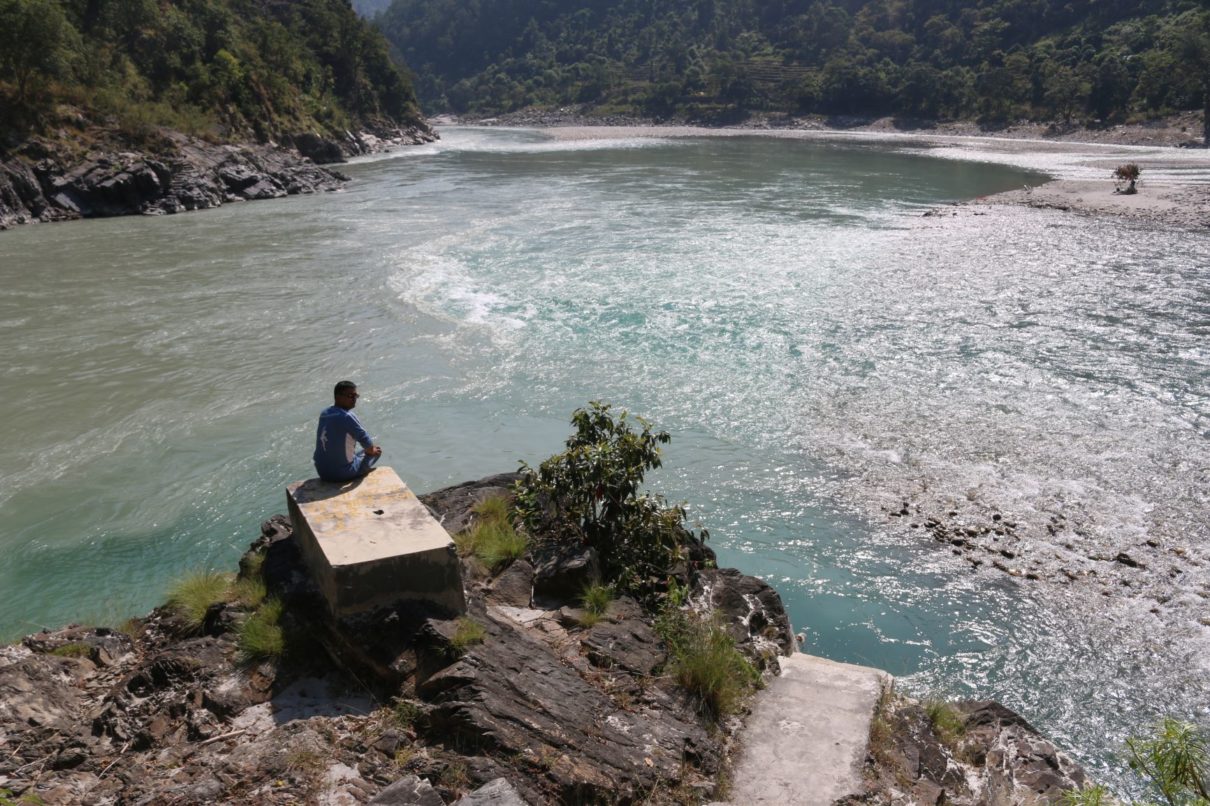The only thing that bothered them was the thought of the bustling Mahendra Highway with heavy vehicles boring down at breakneck speed, the toxic emissions, and fewer opportunities to observe and explore the authentic Terai and its rural life minutely.
And voilà! Following a little brainstorming, Khashing made an exciting discovery—the Hulaki Raj Marga (the Postman Highway)–the trail trodden by mail carriers before the motor roadways came to the Terai (including the Mahendra Highway in 1956), thus, linking untold villages and rural towns in the humongous plains. During the Rana regime (1846-1951), the road also supported transferring mail from India to Kathmandu. The big day arrived, and the adventurous duo, their bicycles stowed and secured on the bus roof, left for Birtamod, Jhapa, their kick-off point for their 30-day journey on wheels. After a hectic off-loading of their bikes at Birtamod and a little layoff at a crummy teashop, they gave a spin to their wheels—their layover at Bhadrapur, 20km away. “Here we come,” called out an ecstatic Binita to her childhood fantasy—the Tarai, in the flesh, right before her eyes. As they left behind the clutter of the town behind, the countryside stretched out in all its glory. The vast swathe of farmland welcomed them with lush amber mustard, vegetables, sugarcane patches, and the young wheat's green. The road cut across scanty houses, and as many shops stood on the sides—the rest, open cultivated land. Shortly before dark, they reached Bhadrapur and checked into a roadside hotel. Binita and Khashing woke up the next day to a clement Tarai morning. After the nipping January chill of Kathmandu, the weather felt promising—no need to heap on layers like back home. And then, Khashing’s old friend from Birtamod, Akash, turned up on his bicycle. Lo behold, he had three other cyclists in tow. The group would tag along with the duo to Mechi Bridge. After that, Binita and Khashing would be on their own. After gorging on a typical Tarai nasta (breakfast): golden-crisp jalebis, puris (puffed-up wheat-flour bread deep-fried in oil), alu-sabji (potato curry), and sweet chai (tea), the rider gang hit the road. Binita seemed to absorb every detail—skipping nothing, the sight, the sound, and even the smell of Terai. And every time they stopped by a settlement or shanty town, heads turned, and a curious crowd gathered to watch unbelievingly at the helmet-clad woman on a bicycle. There was no mistaking the Terai hallmark—the robust odor of burning dead leaves and dung cakes, followed by a strange pungent aroma. “That’s the sugarcane molasses,” Akash said. Clusters of tiny farmsteads, mango groves, the evergreen Jamun, and coconut trees dotted the distant fields. Bunched-up settlements: ramshackle mud-and-thatch huts, improved brick houses, and makeshift lean-to shelters serving as shops and tea houses flanked the road. Binita seemed over the moon as the bunch moved on. Bullock carts, piled high with straw stalks, trundled past, tractors plowed the fields, distant chimneys belched out columns of smoke, women went about their ways with loads balanced on their heads, and every so often, men, women, and girls alike pedaled along on their conventional bicycles. The kids had their way of cheering themselves up by noisily running along their bikes. But what kept striking the duo was the constant presence of thick forest as backdrops at the far end of the fields. Was that a keepsake reminder the entire inhabitation once stood as an impenetrable forest (Char Kose Jhadi)? Close to two hours, the group arrived at the legendary Mechi Bridge. The bridge shares Nepal’s border with Bihar state (Galgalia) in the south and West Bengal in the north. Following a photo shoot and a brief respite, they resumed their pedaling. Aakash suddenly said they would soon be spinning along the historic Hulaki Rajmarga. From then on, the duo would follow that highway until the end of their journey. “But before that, we’ll stop by a one-of-a-kind spot,” he said to the curious group. After an hour, a settlement called Kechan Kawal approached a nondescript village town boasting a spot in Nepal with the lowest elevation from sea level. To the adventurous pair, it sounded exciting. In a half-hour, they arrived at the spot—a vast swathe of barren land where sat a massive concrete platform shaped into a fish; at the head, a pillar stood on the carapace of a turtle effigy at the base. The sight would make any living soul scratch their head in awe, mused Khashing. “Previously, only the column stood there as a landmark. It's been only a few months since its erection to mark the 2020 Tourism Year,” he explained. Previously, a government survey had declared Kechana Kawal, Jhapa, as the zero-level point in Nepal at 60 meters above mean sea level. However, following a new survey in 2017, it lost its title to Mukhiyapatti Musharniya (59m) of the Dhanusha district. After hanging around for a spell followed by a group photo and that feel-good, easy-breezy vibe confabulating with the energetic foursome cyclists from Jhapa, it was time for Khashing and Binita to part ways. Akash offered to ride a little further with the duo. Shortly, he stopped at an intersection. "Buddies, we have already set foot on the classic Hulaki Rajmarga," said Akash. The Hulaki Rajmarga (1,792 km) commences from Kitchen Kawal, Jhapa district, and culminates at Dodhara, Kanchanpur, West Nepal. The Rajmarga was initiated by the 15th Rana Prime Minister Juddha Shumsher JBR ((1932 to 1945), the builder-of-Dharara-fame. Padma. Shumsher JBR (1945 to 1948) proceeded with the follow-up work. The first-ever path connected 20 Districts and traversed across the length and breadth of the Great Plains and the verdant rainforests of Nepal. The concept was to boost the livelihood of the Terai people and tie the far-flung villages together. The Hulaki RajMarg hogged the headlines when a chain of thousands-strong Terai people formed a human chain from Mechi to Mahakali along the Postal Highway as part of the Madhesi agitation against the 2-month-long India implemented Nepal Blockade in 2015, five months following the devastating Earthquake. “And strange as it may sound, the initiation of the Hulaki Rajmarga coincided with the year the World rocked as a US B-29 aircraft dropped the atomic bombs over Hiroshima and Nagasaki (August 6 and 9, 1945), killing almost 199,000 people,” Akash said and bid farewell to the intrepid duo. [email protected]











